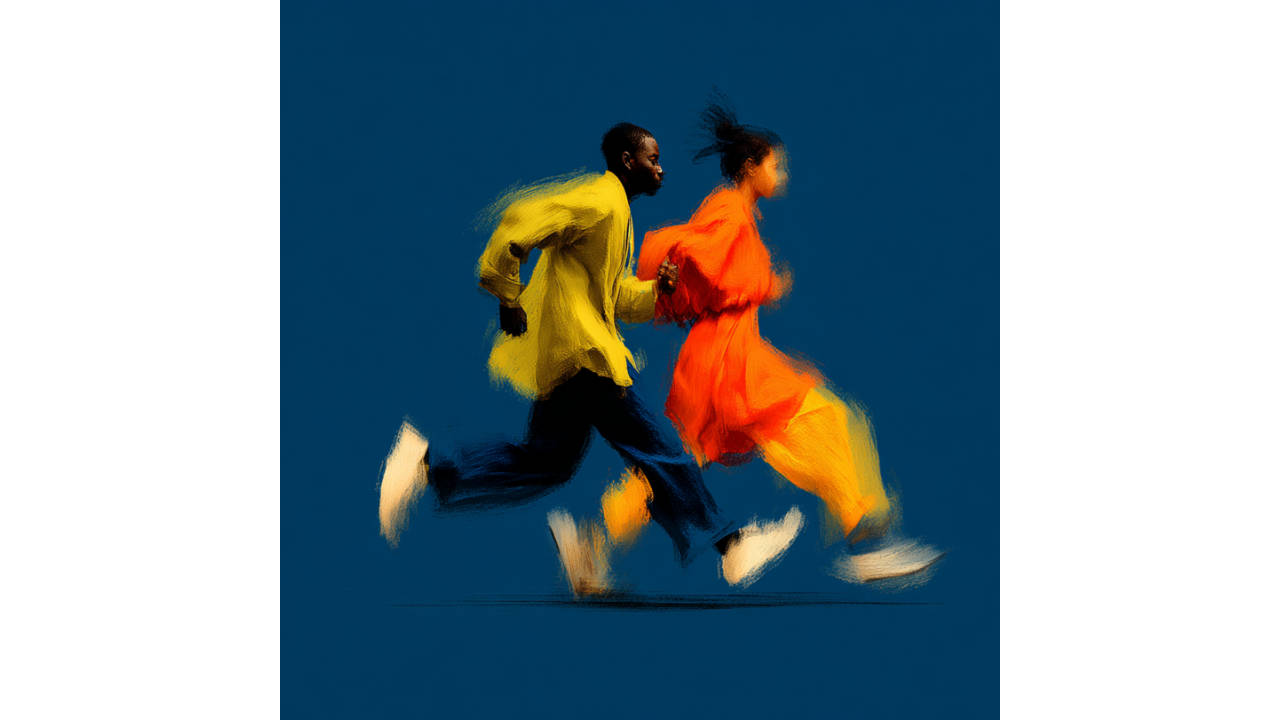Advanced Chatbot Strategies for Complex B2B Sales Cycles
Complex B2B sales cycles don't happen in single conversations. Enterprise software purchases involve multiple stakeholders evaluating solutions over...
4 min read
 SaaS Writing Team
:
Jul 21, 2025 8:00:00 AM
SaaS Writing Team
:
Jul 21, 2025 8:00:00 AM
-2.png)
TikTok's algorithm doesn't distinguish between B2B and B2C content—it amplifies what people actually watch. When procurement managers scroll through skincare routines and cooking tutorials, they're not switching brains. They're the same humans who make million-dollar software decisions, just in a different context. The companies that understand this context-switching are capturing attention while competitors debate whether TikTok is "professional enough."
The creator economy hasn't replaced professional decision-making—it's changed how professionals discover and evaluate solutions. Your CFO might learn about your expense management software through a 30-second TikTok before ever seeing your LinkedIn ad.
B2B buyers don't compartmentalize their media consumption. They consume content across platforms, forming impressions that influence purchasing decisions regardless of where they encountered your brand. TikTok's power lies in its ability to create memorable brand associations through entertainment and education.
The platform's vertical, full-screen format forces immediacy. You have 3-5 seconds to capture attention from someone scrolling past cat videos and productivity hacks. This constraint actually benefits B2B messaging—it eliminates jargon and forces clear value communication.
TikTok's comment section becomes an unexpected customer service channel. Prospects ask technical questions, current customers share experiences, and influencers provide social proof. This creates authentic engagement that traditional B2B platforms struggle to generate.
Creating a TikTok Business Account unlocks analytics and advertising tools that Creator Accounts lack. Your username should match other social handles for consistency, while your bio requires surgical precision—160 characters to communicate your value proposition and include a call-to-action.
Profile optimization follows a simple formula: clean logo or founder headshot, consistent username across platforms, and bio structure that combines problem-solution-audience-link. Use link-in-bio tools like Linktree to direct traffic to multiple destinations without constant bio updates.
Content strategy revolves around balanced pillars that mix education with entertainment. Educational content should dominate at 40% of your posts, covering software tutorials, industry tips, and productivity hacks. Behind-the-scenes content makes up 25%, showcasing team culture, product development, and company milestones. Trend participation accounts for 20%, adapting viral sounds and formats to B2B contexts. User-generated content fills 10% with customer success stories and testimonials, while thought leadership rounds out the final 5% with industry insights and predictions.
HubSpot (@hubspot) with 847K followers demonstrates how educational content with personality-driven delivery creates engagement. Their "Marketing tips that actually work" series provides quick, actionable advice using consistent posting schedules and employee advocacy. The key insight: they adapt trends while maintaining educational value.
Canva (@canva) reaches 1.2M followers through design education integrated with user-generated content. Their before/after design transformations use trending audio while showcasing practical applications. This approach proves that visual-first content can drive engagement when combined with genuine utility.
Grammarly (@grammarly) builds their 892K following through writing tips delivered with humor and relatability. They excel at making common writing mistakes entertaining while providing educational value. Their success stems from consistent branding and active comment engagement that extends conversations beyond individual videos.
Slack (@slack) and Notion (@notion) both focus on workplace productivity but with different approaches. Slack emphasizes relatable workplace scenarios and employee-generated content, while Notion creates aesthetic organization content that appeals to productivity enthusiasts. Both succeed by understanding their audience's daily challenges and providing solutions through entertaining formats.
Successful B2B TikTok content follows a Hook-Value-CTA structure that maximizes the platform's short attention spans. The hook occupies the first 3 seconds with attention-grabbing openers like "Your CRM is costing you $50K annually" or "I analyzed 1,000 SaaS landing pages and found this." These statements create immediate relevance for your target audience.
Value delivery happens in the middle 20 seconds through educational or entertaining content. This might include quick tips, surprising insights, behind-the-scenes moments, or product demonstrations. Maintain high energy and clear audio throughout while using visual aids or screen recordings to support your message.
The call-to-action in the final 5 seconds should feel natural rather than salesy. "Follow for more SaaS growth tips" or "Link in bio for the full guide" work better than direct sales pitches. The goal is building audience relationship rather than immediate conversion.
Screen recording tutorials work exceptionally well for SaaS content, allowing you to demonstrate actual product functionality. Use tools like Loom for clean recordings and maintain vertical format for optimal viewing. Add captions for accessibility and engagement.
Timing matters more for B2B audiences than consumer brands. Tuesday through Thursday between 6-9 AM and 7-9 PM EST typically perform best, while Monday mornings and Friday afternoons should be avoided. However, your specific audience may vary, so test different times and monitor analytics for optimal posting windows.
Posting frequency should prioritize quality over quantity. While daily posting is ideal, 3-4 high-quality posts per week outperform daily low-effort content. Consistency matters more than frequency—establish a schedule you can maintain long-term.
Hashtag strategy requires balancing niche and broad appeal. Use 3-4 specific hashtags like #SaaS, #B2BSales, or #MarketingTips to reach your target audience. Combine these with 3-4 broader hashtags like #Business, #Productivity, or #Entrepreneur for extended reach. Include 2-3 trending hashtags from the current viral content, plus 1-2 branded hashtags for your company.
Content calendar structure helps maintain consistency while covering all content pillars. Monday educational content sets the week's tone, Tuesday behind-the-scenes content humanizes your brand, Wednesday trend participation keeps you relevant, Thursday user-generated content provides social proof, and Friday thought leadership positions your expertise.
Key performance indicators for B2B TikTok extend beyond vanity metrics. Monitor video views and follower growth for awareness, but focus on engagement quality through comment response rates, average watch time, and completion rates. Most importantly, track conversion metrics like website traffic from TikTok, lead generation attribution, and demo requests from TikTok traffic.
A/B testing should focus on one variable at a time over minimum two-week periods. Test hook styles, video length, posting times, and hashtag combinations while maintaining consistent posting schedules. Use UTM parameters to track traffic and conversions back to specific content pieces.
TikTok advertising for B2B works best through Spark Ads that promote already-performing organic content. In-Feed Ads provide native advertising opportunities, while Branded Hashtag Challenges can create user participation around your brand. Start with modest budgets and scale based on performance data.
Cross-platform content strategy maximizes your TikTok investment by repurposing successful videos into Instagram Reels, YouTube Shorts, and LinkedIn posts. Extract key insights from popular videos for blog content and email marketing campaigns. This approach multiplies your content's reach while maintaining consistency across platforms.
Brand safety on TikTok requires clear guidelines that balance professionalism with platform authenticity. Maintain approachable tone while avoiding controversial topics unrelated to your industry. Review trending audio for appropriate context before use, and establish escalation procedures for negative feedback.
The future of B2B marketing isn't about choosing between professional and personal platforms—it's about meeting your audience where they naturally spend time. TikTok represents the democratization of attention, where small SaaS companies can compete with enterprise brands through creativity and authenticity rather than advertising budgets.
Ready to build a TikTok presence that drives real B2B results? At Winsome Marketing, we help SaaS companies develop creator economy strategies that balance professional credibility with platform-native content. Our approach combines B2B marketing expertise with social media creativity to build authentic audience connections that convert to business outcomes.
-3.png)
Complex B2B sales cycles don't happen in single conversations. Enterprise software purchases involve multiple stakeholders evaluating solutions over...

In 2018, HubSpot's marketing team faced an embarrassing problem. Their own marketing automation wasn't working for their enterprise sales team. Leads...

Right now, someone is sitting in a conference room three floors up from their IT department, quietly Googling your competitors.